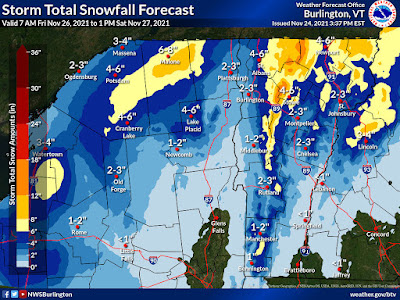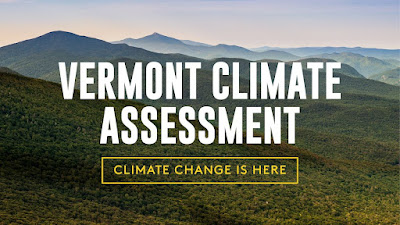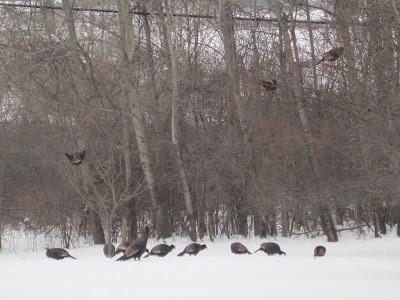 |
| Forecasts through the first week of December keep most of the U.S. warm, but Vermont and the rest of New England would be an exception and stay chilly. |
This state of affairs should continue for several more days at least.
More than three dozen record highs were reported from Iowa to the West Coast on Monday. It was in the mid and upper 60s in much of South Dakota, for instance. Boulder, Colorado had made it to 70 degrees by 10 a.m. Monday.
The warmth in the United States (except for us!) is forecast to continue this week. As Matthew Cappucci of the Washington Post Capital Weather Gang notes, Billings, Montana could be in the mid and upper 60s by Wednesday. Denver has yet to see any measurable snow this season, the latest on record that city has gone without snow.
An unusually strong and large upper level ridge centered roughly over the southern Rockies as keeping everything warm from the West Coast to the Mississippi Valley. It's also keeping storminess at bay, except in the northwest corner of the nation, the Great Lakes and to a lesser extent New England.
The jet stream goes up and over that ridge, meaning it has a northwest to southeast orientation on the front side of it over the Great Lakes and New England.
That arrangement is bringing one little disturbance after another zipping southeastward over us. Each of those brings a new packet of chilly air from Canada, keeping Vermont and the rest of New England nippy.
On Thursday, a very brief squirt of warm-ish air will sneak it, bringing Vermont's valley locations into the low 40s with some rain showers. But 40 degrees isn't exactly warm, and the cold regime will quickly re-establish itself Thursday night and continue through Sunday.
Some sort of storm system looks like it might come through Monday, but it's unclear if it will go by to our south and east, continuing the chilly weather, or go to our west, creating another brief squirt of sort of mild air
There's a few iffy signs that mega-ridge of hot for December air could move east in the second week of December. If that happens, we might, just might, revert back to milder autumn like weather for a little while.
For what it's worth, extended outlooks keep the western and central United States balmy through mid-December at least. According to these same forecasts, New England remains the lone cold area in the Lower 48 through the first week of December before turning milder after that.
Time will tell on that one works out!























